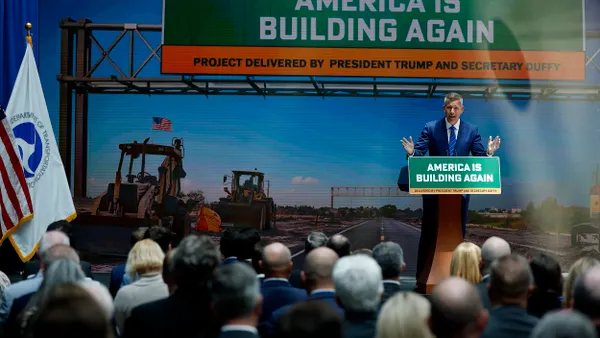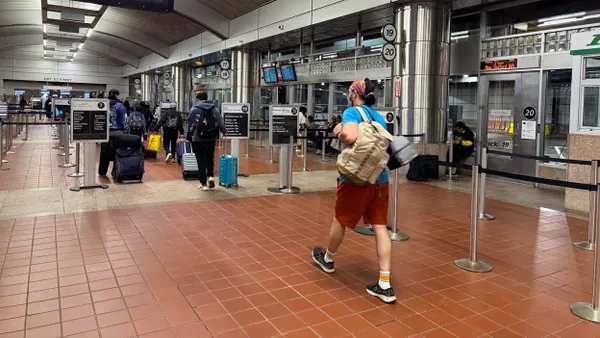California’s high-speed rail project faces an uncertain future. With the U.S. Department of Transportation threatening to cancel $4 billion in previously approved grants, hopes hang on the state legislature and potential private investment to, at minimum, complete the segment under construction in the state’s Central Valley.
A June 4 letter from the Federal Railroad Administration to the California High-Speed Rail Authority gave the authority 37 days to respond to criticisms of project mismanagement outlined in a 300-page FRA Compliance Review Report.
The letter cited a February report from the California Office of the Inspector General that found a $6.5 billion shortfall in funding to complete the initial 171-mile segment between Bakersfield and Merced, California. The OIG report also said it is “increasingly unlikely” the authority will be able to finish that segment by its target date of 2033.
The FRA said in the letter it is “convinced CHSRA has no credible plan to address this funding gap.” It cited a “pattern of broken promises” dating back to the project’s early days. Originally conceived as an 800-mile network connecting San Francisco and Southern California by 2030, the authority now estimates service beginning along the 171-mile Merced-Bakersville, California, line between 2030 and 2033 at a cost of up to $35 billion.
The FRA further said it “has no confidence the authority will ever deliver an operating high-speed rail system,” and concluded that the authority’s inability to complete the Central Valley segment within the agreed budget and schedule constitutes a default under its agreement.
“The Authority strongly disagrees with the FRA’s conclusions, which are misguided and do not reflect the substantial progress made to deliver high-speed rail in California,” an authority spokesperson said in an email. “We remain firmly committed to completing the nation’s first true high-speed rail system connecting the major population centers in the state.”
The spokesperson noted that most of the authority’s funding to date has come from the state. That includes $4.2 billion from 2008’s voter-approved bond measure and from California’s emissions cap-and-trade program. California Gov. Gavin Newsom, a Democrat, proposed dedicating $1 billion annually to the high-speed rail project from the state’s cap-and-trade program in his revised fiscal year 2026 budget proposal.
Baruch Feigenbaum, senior managing director of transportation policy at the Reason Foundation, a libertarian think tank, doesn’t see much hope the state can pony up the money the authority will need. “I don't think there is support from the state government to pick up the rest,” he said. “I don't believe, given what the political situation is in Sacramento right now, there is another path forward.”
Feigenbaum is no more optimistic about hopes for private investment. “Because of its cost, there's just no way that the private sector could make money on it,” he said. “It's just not feasible.”
Rick Harnish, executive director of the advocacy group High Speed Rail Alliance, believes there is a way forward but said it requires the state legislature “to get serious.” He urged California lawmakers to fight to keep federal funding in place and to ramp up construction beyond the Central Valley. “Stop futzing around and figure out how to make it happen,” he said.
According to an April poll commissioned by Politico and UC Berkeley’s Jack Citrin Center for Public Opinion Research, 67% of registered California voters support continuing the high-speed rail project.
“California voters are tired of traffic jams and airport delays,” Andy Kunz, president and CEO of advocacy group the U.S. High Speed Rail Association, said in an email statement. “Support for the California High-Speed Rail project is growing as the state’s transportation system continues to grind to a halt.”
While Feigenbaum said he hopes the high-speed rail authority “would see the writing on the wall and wind it down,” that’s not where the authority appears to be headed. “The Authority will fully address and correct the record in our formal response to the FRA’s notice,” its spokesperson said.











